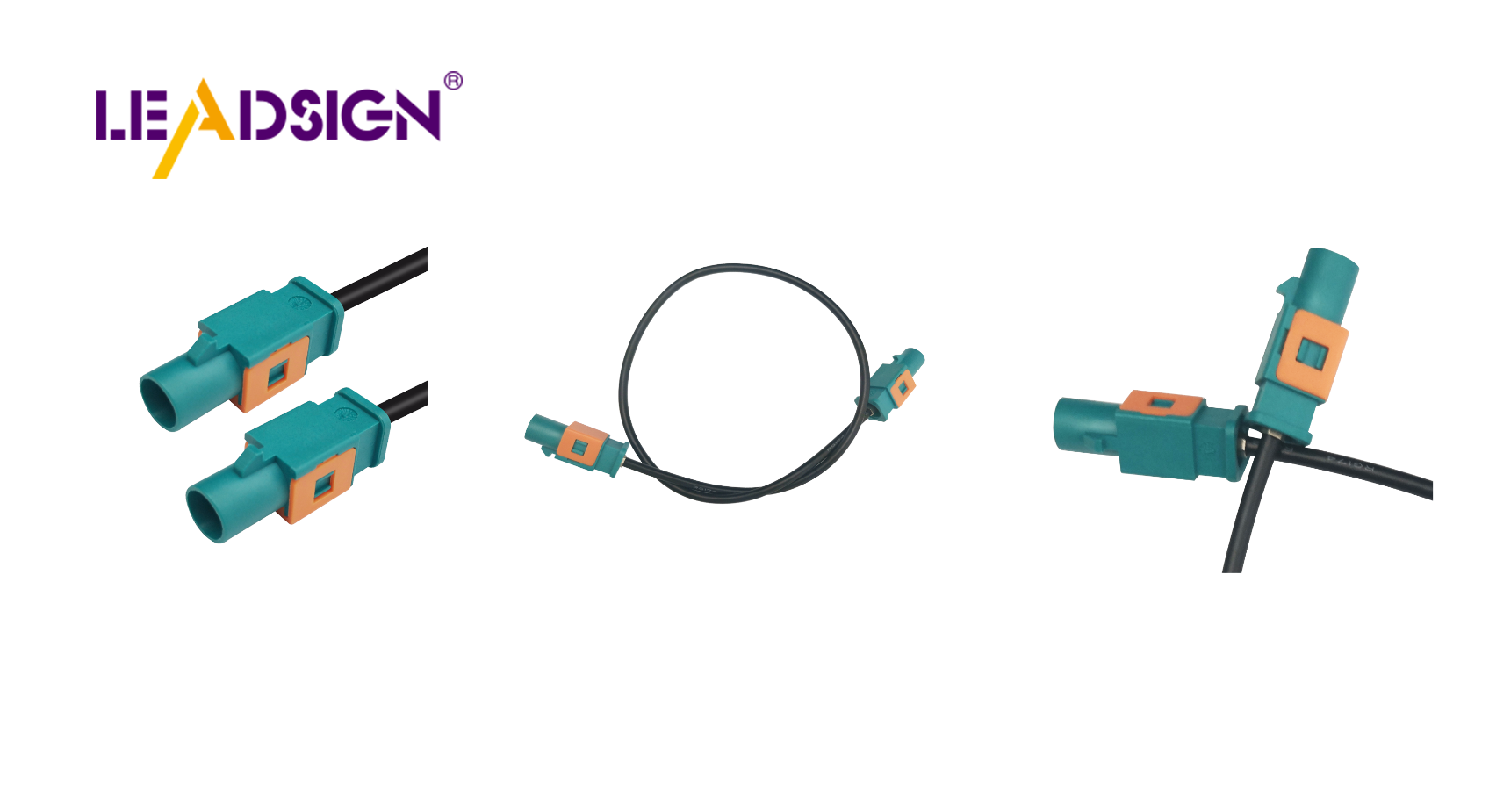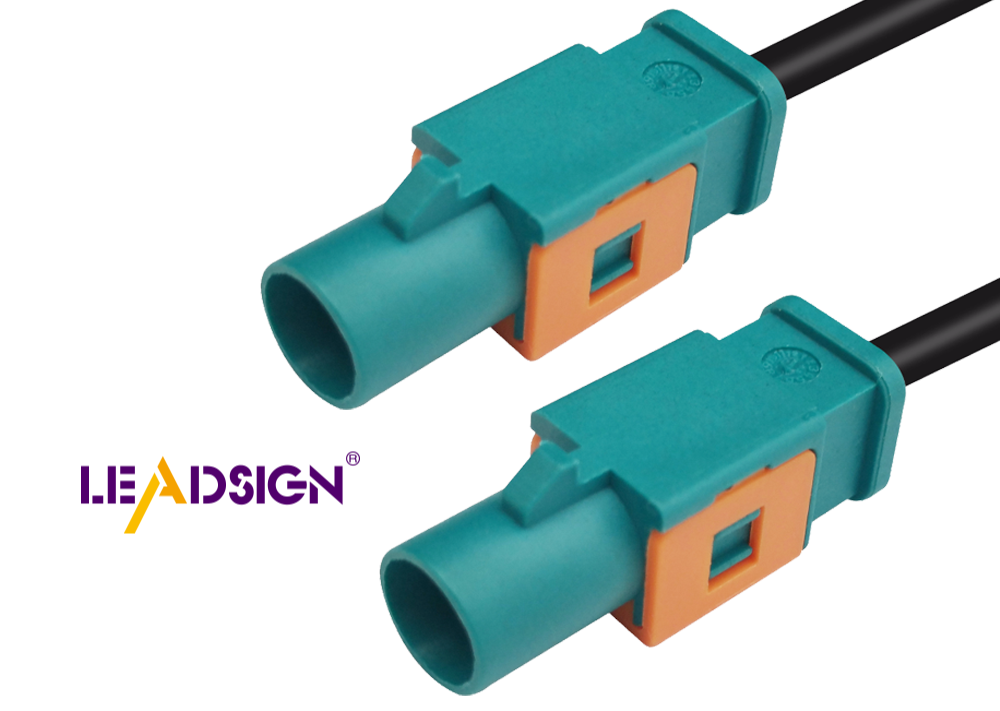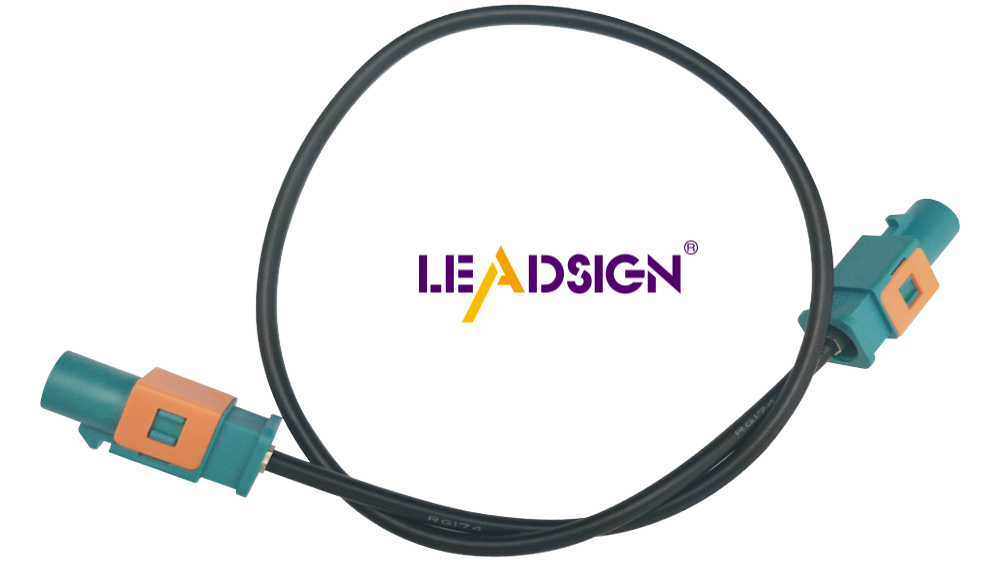Demystifying Automotive Electrical Connectors Types for Better Maintenance

Understanding automotive electrical connectors is crucial for maintaining your vehicle's reliability and performance. These connectors play a vital role in linking various car components, ensuring seamless communication and power distribution. For instance, pigtail connectors are essential for connecting electrical parts like headlights and advanced driver-assistance systems. Regular inspections and maintenance of these connectors can prevent unexpected failures and enhance safety. By familiarizing yourself with different car wire connector types, you can ensure your vehicle operates efficiently and safely, ultimately saving on costly repairs and replacements.
Understanding Automotive Electrical Connectors

Basic Concepts
Definition and Purpose
Automotive electrical connectors serve as the vital links between various components in your vehicle. They ensure that electrical signals and power flow seamlessly, enabling different systems to function properly. You can think of them as the nervous system of your car, transmitting information and energy where needed. Without these connectors, your vehicle's electrical systems would fail to communicate, leading to malfunctions.
Importance in Automotive Systems
In automotive systems, connectors play a crucial role in maintaining the reliability and performance of your vehicle. They connect everything from the engine control unit to the lighting system. By ensuring proper connections, you help prevent electrical failures that could lead to costly repairs or even accidents. Regular maintenance and understanding of these connectors can significantly enhance your vehicle's safety and efficiency.
Common Materials Used
Metal Connectors
Metal connectors are commonly used in automotive applications due to their excellent electrical conductivity and durability. They are often made from materials like copper or aluminum, which provide reliable connections even under harsh conditions. You will find metal connectors in areas where high current flow is required, such as battery terminals and starter motors. Their resistance to corrosion makes them ideal for long-term use in vehicles.
Plastic Connectors
Plastic connectors offer several advantages, including lightweight construction and resistance to chemicals and moisture. Materials like nylon, polypropylene, and thermoplastic elastomers are frequently used in these connectors. They provide mechanical strength and thermal stability, ensuring that connections remain secure in various environments. Plastic connectors are often used in areas where flexibility and insulation are important, such as in wiring harnesses and sensor connections. By choosing the right material for each application, you can ensure that your vehicle's electrical system remains reliable and efficient.
Car Wire Connector Types

Understanding the different car wire connector types is essential for maintaining your vehicle's electrical system. These connectors ensure that power and signals are transmitted efficiently, supporting various functions in your car.
Classification by Function
Power Connectors
Power connectors are crucial for delivering electricity to various components in your vehicle. They handle high current flows, making them vital for systems like the battery and starter motor. By ensuring a stable power supply, these connectors help maintain the performance and reliability of your car. Investing in high-quality power connectors can reduce maintenance costs and downtime, as they require fewer replacements.
Signal Connectors
Signal connectors facilitate communication between electronic control units (ECUs), sensors, and actuators. They transmit data that controls functions such as engine management, lighting, and climate control. Reliable signal connectors ensure smooth operation of these systems, enhancing your vehicle's safety and efficiency. As the demand for high-performance connectors grows, choosing the right signal connectors becomes increasingly important.
Classification by Design
Blade Connectors
Blade connectors are flat, metal connectors that provide a secure and reliable connection. They are commonly used in automotive applications due to their ease of use and durability. You will find blade connectors in areas where quick connections are necessary, such as fuse boxes and relay panels. Their design allows for easy attachment and detachment, making maintenance straightforward.
Pin Connectors
Pin connectors consist of a series of pins that fit into corresponding sockets. They offer a compact and efficient way to connect multiple wires. Pin connectors are often used in areas where space is limited, such as in engine compartments and dashboard wiring. Their robust design ensures a stable connection, even in harsh conditions.
Classification by Application
Engine Connectors
Engine connectors are designed to withstand the high temperatures and vibrations found in the engine compartment. They connect critical components like the engine control unit, sensors, and ignition system. By ensuring reliable connections, engine connectors help maintain optimal engine performance and prevent costly repairs.
Lighting Connectors
Lighting connectors link the vehicle's lighting system, including headlights, taillights, and interior lights. They ensure that power and signals are transmitted efficiently, providing consistent illumination. Proper maintenance of lighting connectors can prevent issues such as flickering lights or complete failures, enhancing your vehicle's safety on the road.
By familiarizing yourself with these car wire connector types, you can ensure that your vehicle's electrical system remains reliable and efficient. Regular inspections and maintenance of these connectors will help you avoid unexpected failures and costly repairs.
Best Practices for Maintenance
Maintaining your vehicle's electrical connectors is essential for ensuring reliability and safety. By following best practices, you can prevent unexpected failures and extend the lifespan of these crucial components.
Regular Inspection
Regular inspections help you identify potential issues before they become major problems.
Identifying Wear and Tear
Look for signs of wear and tear on your connectors. Check for corrosion, discoloration, or any physical damage. These signs indicate that the connector may not function properly. Pigtail connectors, for example, play a significant role in vehicle reliability. Their integrity directly impacts safety and performance. Regular checks ensure they remain in good condition.
Cleaning Techniques
Cleaning your connectors is vital for maintaining their performance. Use a soft brush or compressed air to remove dirt and debris. For stubborn grime, a mild cleaning solution can help. Ensure the connectors are completely dry before reattaching them. This practice prevents moisture-related issues and maintains optimal connectivity.
Proper Handling and Storage
Proper handling and storage of connectors prevent damage and ensure longevity.
Avoiding Damage
Handle connectors with care to avoid bending or breaking them. When disconnecting, pull on the connector body, not the wires. This prevents stress on the connections. Using OEM connectors ensures proper fit and reduces the risk of damage. High-quality connectors protect your vehicle's electrical system and maintain warranty coverage.
Storage Conditions
Store connectors in a clean, dry environment. Avoid exposure to extreme temperatures or humidity. Proper storage conditions prevent corrosion and degradation. If you need to store connectors for an extended period, consider using protective covers or bags. This practice keeps them in optimal condition for future use.
By adhering to these best practices, you can maintain the integrity of your vehicle's electrical connectors. Regular inspections and proper handling ensure your vehicle remains reliable and safe. Investing time in maintenance now saves you from costly repairs later.
FAQs on Automotive Electrical Connectors
Common Questions
How to identify connector types?
Identifying automotive electrical connectors can seem daunting, but with a few tips, you can become proficient. Start by examining the shape and size of the connector. Blade connectors, for instance, have a flat, metal design, while pin connectors consist of multiple pins fitting into sockets. Look for any markings or labels on the connector, which often indicate the type or manufacturer. If you're still unsure, resources like FindPigtails.com offer extensive inventories and expert assistance. As one user shared, "The 'Pigtail Pros' at FindPigtails.com are not only knowledgeable but are equipped to help you find the exact connector you need in mere seconds." This kind of support can be invaluable when identifying the right connector for your vehicle.
What are the signs of a faulty connector?
Recognizing a faulty connector early can save you from bigger issues down the road. Here are some common signs to watch for:
Corrosion or Rust: Check for any green or white powdery residue, which indicates corrosion. This can disrupt the electrical flow and lead to failures.
Discoloration: Look for any burnt or discolored areas on the connector. This often results from overheating or electrical arcing.
Loose Connections: Ensure that connectors fit snugly. Loose connections can cause intermittent electrical issues, leading to malfunctioning systems.
Physical Damage: Inspect for any cracks or breaks in the connector housing. Damaged connectors may not provide a secure connection, affecting performance.
By staying vigilant and addressing these signs promptly, you can maintain your vehicle's reliability and safety. Regular inspections and maintenance will help you catch these issues before they escalate, ensuring your vehicle remains in top condition.
Understanding automotive electrical connectors is essential for maintaining your vehicle's reliability and performance. By familiarizing yourself with different connector types, you ensure smoother operation and greater safety. Regular maintenance and inspections prevent unexpected failures, saving you from costly repairs.
Pigtail connectors, often overlooked, play a critical role in your vehicle's efficient operation.
Investing in high-quality connectors is a must. This investment ensures long-term reliability and prevents major issues. Apply this knowledge to enhance your vehicle upkeep, ensuring it remains in top condition for years to come.
See Also
Exploring the Fundamentals of HSD Connectors in Automotive
Understanding the Significance of Fakra Connectors in Modern Cars
The Significance of HSD Connectors in Automotive Applications

